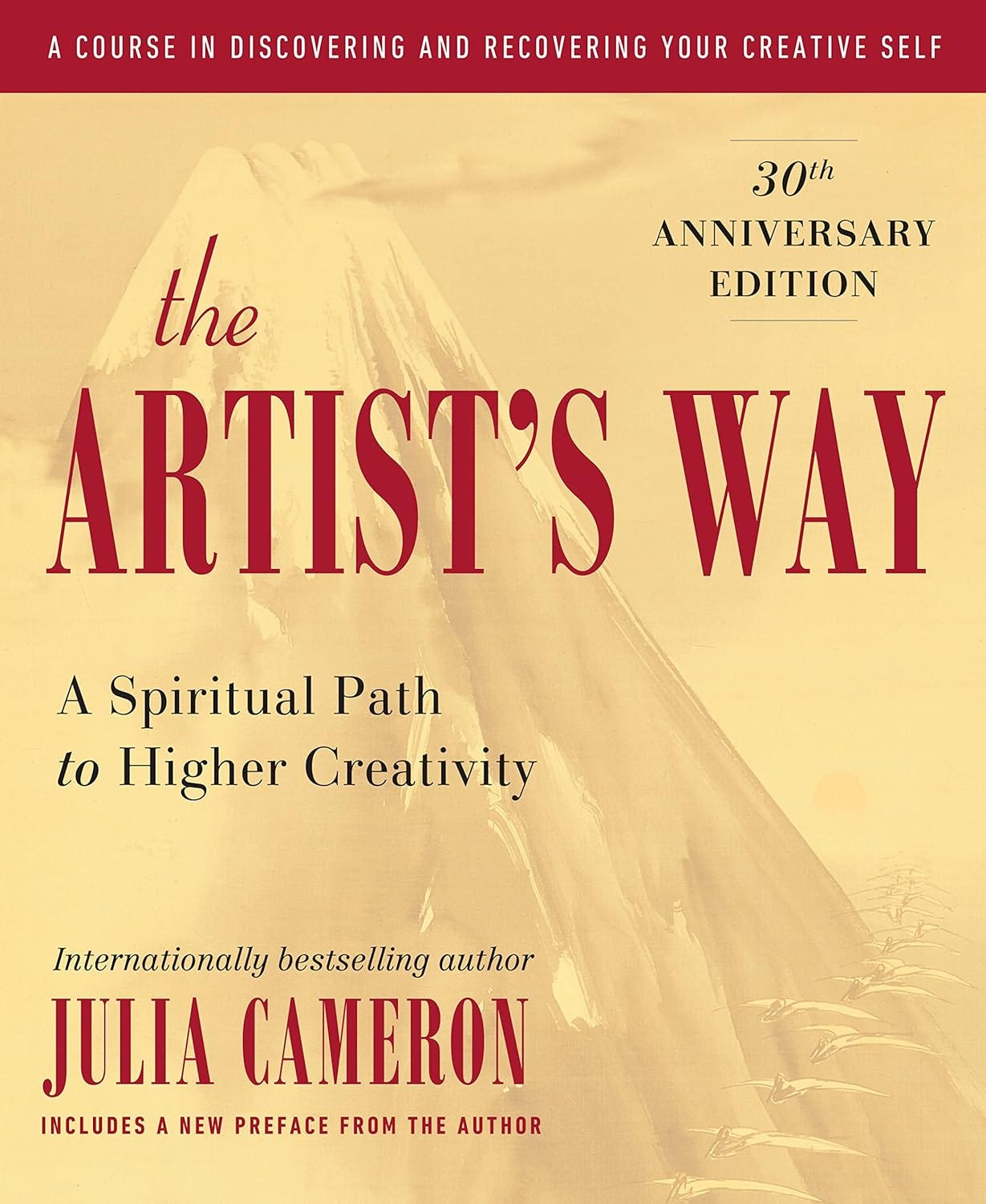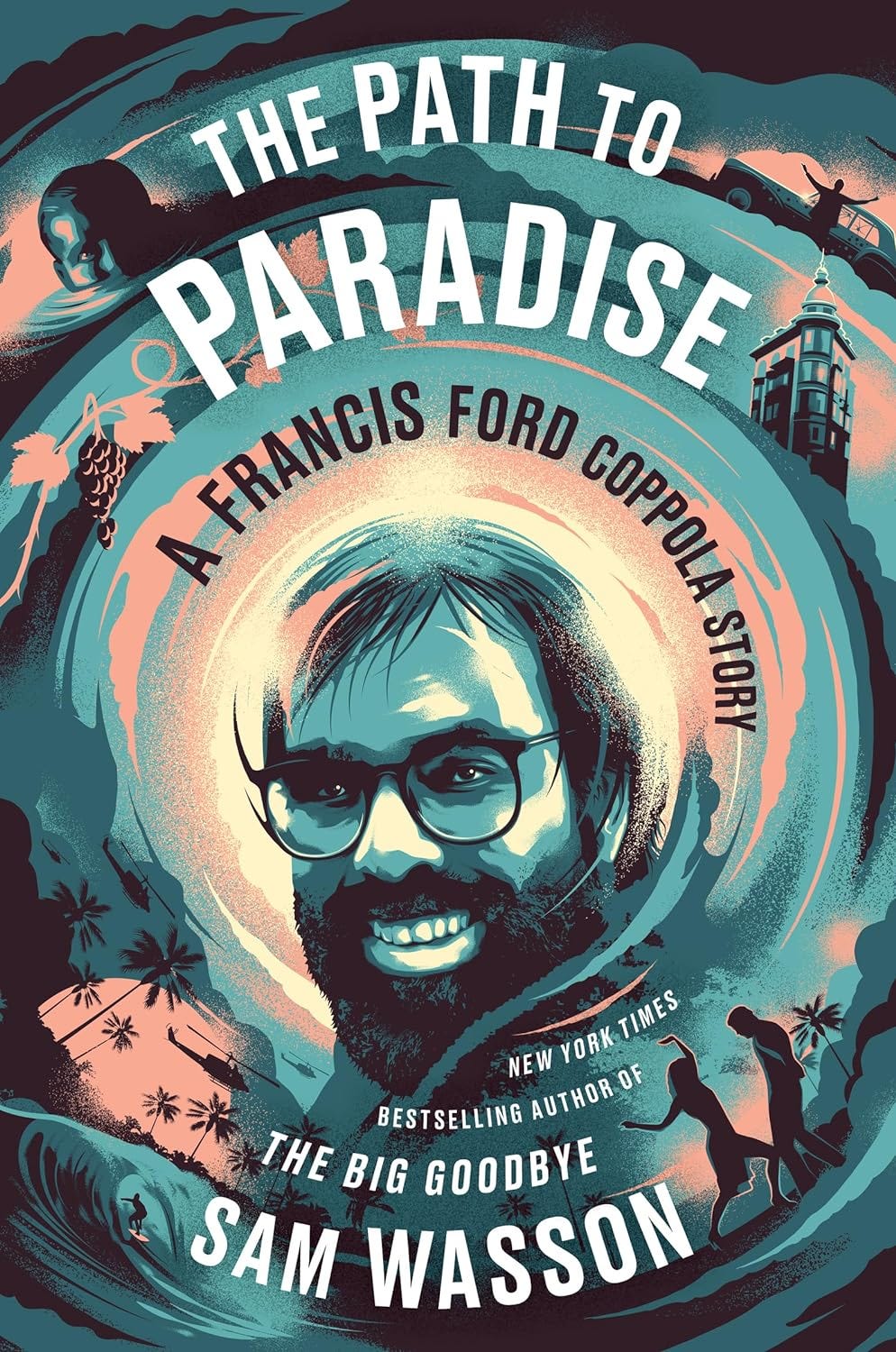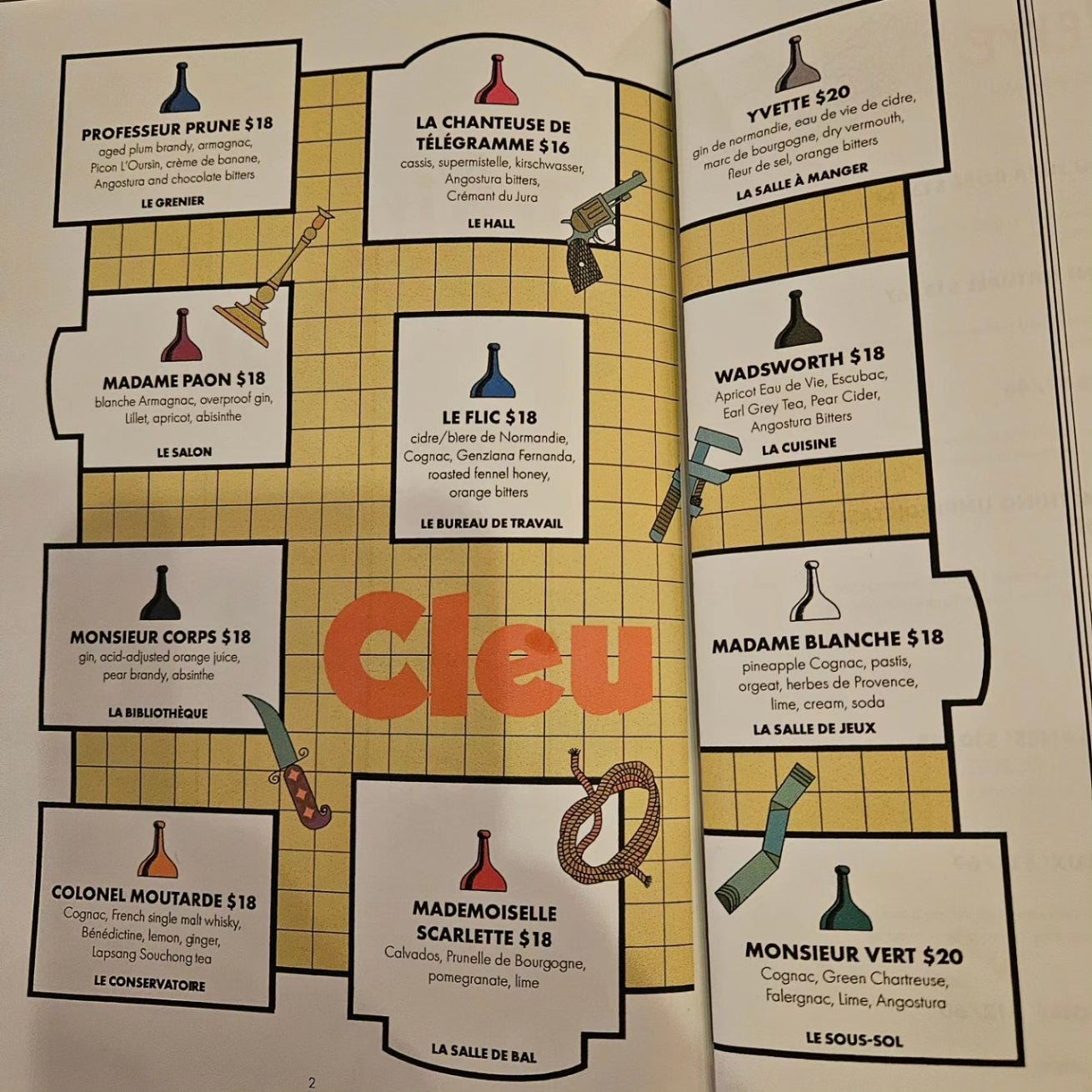C&C 26: The Agony of Reading Deprivation Week
Creativity, Coppola, and an inspired cocktail menu
Throughout 2023, I’ve done things off the beaten path for me. (Exhibit A: improv class.) Maybe it’s a midlife crisis—and, why, yes, I am planning to be a centenarian. Whatever the reason, all year long I’ve been pushing myself in unexpected directions.
Which is how I wound up going into the holiday season doing the twelve-week program outlined in Julia Cameron’s The Artist’s Way (1992).
You’ve likely heard of the landmark self-help book. I certainly had. I’d given it a wide berth, the lapsed Catholic in me leery of the spiritual component in Cameron’s teachings. In guiding people to what she calls artistic recovery, Cameron regularly invokes God. She stresses that whenever she uses the word, you’re free to substitute “the universe,” “good orderly direction,” or whatever suits you. The terminology doesn’t matter, as long as you accept the core concept that we are all creative and can tap into that power by getting out of our own way and aligning ourselves with the “creative energy of the universe.”
As I said, a little woo-woo for me. But the book has been around for over thirty years and boasts legions of adherents, especially in show business. Shortly after starting the course, I read End Credits: How I Broke Up with Hollywood (2023) by Patty Lin, a memoir recommended by Alex Segura. Lin says The Artist’s Way was essential in helping her chart a new course when she decided to walk away from a successful TV writing career. (Encountering an endorsement of the book as I began reading it is the kind of coincidence that Julia Cameron would encourage me to think of as synchronicity.)
I wasn’t in need of “unblocking,” as Cameron puts it. If anything, I’ve been on a steady, productive run. Still, there were aspects of my creative life that felt sluggish, and I had my suspicions as to why that was. I also had no plan for how to deal with it.

Then sportswriter Molly Knight announced that she was doing a Substack course on The Artist’s Way. It would be the seventh time she’d been through the book, saying, “I get something new out of it every go-round.” I remained skeptical. But as Cameron herself advises when it comes to the tasks she assigns each week, “Pick those that appeal to you and those you strongly resist” because in choosing, “we often resist what we most need.” I’ve found that to be true.
What the hell.
The online portion of Molly’s class was at a time that conflicted with the Pilates class I’d started. Because remember, I’m a) doing new things, and b) trying to live forever. So I plunged in solo.
To my surprise, I took to it instantly. I responded to the practice of morning pages, longhand stream-of-consciousness writing akin to clearing ghosts out of the attic. I enthusiastically planned my weekly artist dates, dedicating two hours of time to refilling the well, “the active pursuit of images to refresh our artistic reservoirs.” Because of this ritual, I sat with public art that I customarily ignored, saw some extraordinary exhibits at the Frye Art Museum I would have missed, and spent time with Bruce Lee’s personal library looking at his handwritten annotations. I went into each new week eager to see what was next.
Until I read the following: “If you feel stuck in your life or in your art, few jump starts are more effective than a week of reading deprivation.” (Italics Julia’s.)
Hold the fucking phone, Julia. (Italics mine.)
It should be obvious that I read a lot. I generally have multiple books going at once, including one that I perform aloud to Rosemarie while she prepares dinner. (You don’t want me in the kitchen. You want me doing accents and funny voices. Trust me on this.) I’m a newspaper and magazine hound. A cornerstone of my sleep ritual is a minimum of twenty minutes of reading before bed. Reading is part of my job. Julia and I would be having words.
She was, of course, ready. “Reading deprivation is a very powerful tool—and a very frightening one,” she writes, observing that the practice always generates resistance. But she mounts a persuasive argument. “For most artists, words are like tiny tranquilizers. We have a daily quota of media chat that we swallow up. Like greasy food, it clogs our system.” (Note that she wrote those words in the days before social media.) “Reading deprivation casts us into our inner silence,” allowing us to hear our own thoughts over the static. If we minimize the inflow, “our reward will be a new outflow.” As for work, Julia noted that she had jobs that required reading and regularly shirked those responsibilities for a week or more through procrastination—often in ways that demonstrated more creativity than her own writing.
Plus I was raised a good Catholic boy. My inclination is always to follow the rules.
What the hell.
I put myself on a strict diet. I could check the newspapers once a day and skipped many articles I would normally have read, my score in the New York Times news quiz suffering for it that week. I steered clear of social media and didn’t read any Substacks. (Sorry, gang.) I didn’t pick up a book or magazine for seven days.
Instead, I did some household tasks I’d been putting off. Before bed, I’d do longer winddown meditations. I noodled around with musical instruments I’d neglected, and dug out colored pencils for some truly godawful sketches. Julia warned me it would happen: “Sooner or later, if you are not reading, you will run out of work and be forced to play.”
And amidst all this, I came up with some new ideas for a project that had stymied me, simply by sitting with my own thoughts for longer than I usually do.
Reading Deprivation Week is now mercifully over, but its impact lingers. My social media use has not rebounded. I unsubscribed from several newsletters and skip more articles. Longer nightly meditations are now routine. Mainly, I’ve learned that it’s a good idea to investigate your habits, even the ones you think are healthy.
What I’m Reading
The timing of Reading Deprivation Week was fortuitous in that I had just finished The Path to Paradise: A Francis Ford Coppola Story (2023) by Sam Wasson. Because there was no way I was putting this book down.
I’m on the record about my feelings regarding Wasson’s Improv Nation (2017) and The Big Goodbye: Chinatown and the Last Years of Hollywood (2019). I was eager to see what he’d do given access to the full Coppola archive, plus the man himself and many of his colleagues.
And at first, I thought, “We’re doing Apocalypse Now again?” Don’t get me wrong, the film and the tumultuous story of its making and damn-near-unmaking are both compelling. They’re also well-documented, as is so much of Coppola’s protean career. (I say again: if you haven’t watched The Offer, the 2022 miniseries about the making of The Godfather with Dan Fogler as Coppola, you’re missing out.)
But Wasson has a plan. He uses Apocalypse Now to frame the tale he wants to tell, about Coppola’s lifelong efforts to forge his ideal creative environment, a living, breathing, collaborative utopia that he christened Zoetrope. In Coppola’s vision, it “would be an oasis, a paradise of self-discovery and celebration wide open to everyone … La Bohème for the planet.” It never quite came together, but that it almost did—more than once—is itself a miracle.
This focus allows Wasson to touch on the totality of Coppola’s life and art. It produces valuable insight into the films of friends and contemporaries like George Lucas and even daughter Sofia, her worldview shaped by essentially growing up the princess of an enchanted kingdom. It illuminates the idiosyncratic work methods of the man who called The Godfather “the most expensive home movie in history.” In With Nails (1996), actor Richard E. Grant recounts living with the full cast of Bram Stoker’s Dracula on Coppola’s rambling Northern California estate for weeks of rehearsals, which included reading the original novel aloud together and a hot-air balloon ride for Grant, Cary Elwes, and Bill Campbell “in frock coats and top hats … Francis has offered up this privilege as an experience (their characters) could have. For the sheer grace of it.”
Weep for the lost projects of Zoetrope, almost made reality! A faithful adaptation of James M. Cain’s Serenade scripted by novelist Jim Harrison! Tucker: The Man and His Dream as a musical, with songs by Comden and Green! A contemporary chamber version of La Bohème with John Lennon updating the libretto! (A minor caveat: I would have appreciated more than the occasional throwaway reference to Hammett [1982], the hard-luck Wim Wenders film based on a Joe Gores novel and co-written by my hero Ross Thomas that Coppola produced while writing, directing, and losing his shirt on the musical One from the Heart.)
What resonates is how much of a visionary Coppola was. His problem was that he was too early. Decades ago he talked of “exploiting a single property across all media,” with magazine articles yielding proto-podcasts and stage productions before going in front of movie or TV cameras. Exactly what corporations are doing now, but without the love. Coppola spoke of “digital cinema” in the 1980s, the liberating force of mankind’s inventiveness a constant refrain.
It was technology. That was the answer. It always had been.
He thought about the future of Zoetrope, about the coming digital revolution, how technology and the arts could free people, how freed people could reconstitute the world.
Technology would bring us more leisure, more time to become and enjoy ourselves.
His prophecy was destined to come only partly true. We got what Coppola wanted, but not how he wanted it. He imagined a world where advances in hardware would allow filmmakers to be nimble and tell highly personal stories, along the lines of what Sean Baker accomplished with Tangerine and The Florida Project. We ended up with TikTok and MrBeast instead.
The Path to Paradise closes on a note of optimistic defiance, with Coppola at age 84 again gambling his all on a movie made his way, the upcoming Megalopolis. More good news: Coppola’s version of One from the Heart will be in theaters in 2024.
What I’m Drinking
We celebrated Rosemarie’s birthday at one of her favorite places, L’Oursin. Which meant I got to order from this remarkable new cocktail menu. I had the Colonel Moutarde and the Professeur Prune, the latter one of the finest drinks I’ve ever enjoyed. I will return to interrogate the rest of the suspects.





For about 10 years I was the only Bruce Lee fan I knew. It's always satisfying to see references to him pop up in unexpected places.
Thanks for mentioning "The Florida Project." Such a straightforward unadorned portrayal. I loved when the kids shared chewing gum.
Thanks also, a couple posts back, for "My Savage Year." It was your writing elsewhere that turned me on to "Everybody Knows." Made me an instant fan.
I think I could quit drinking and quit eating chocolate easier than I could quit reading. Interesting!